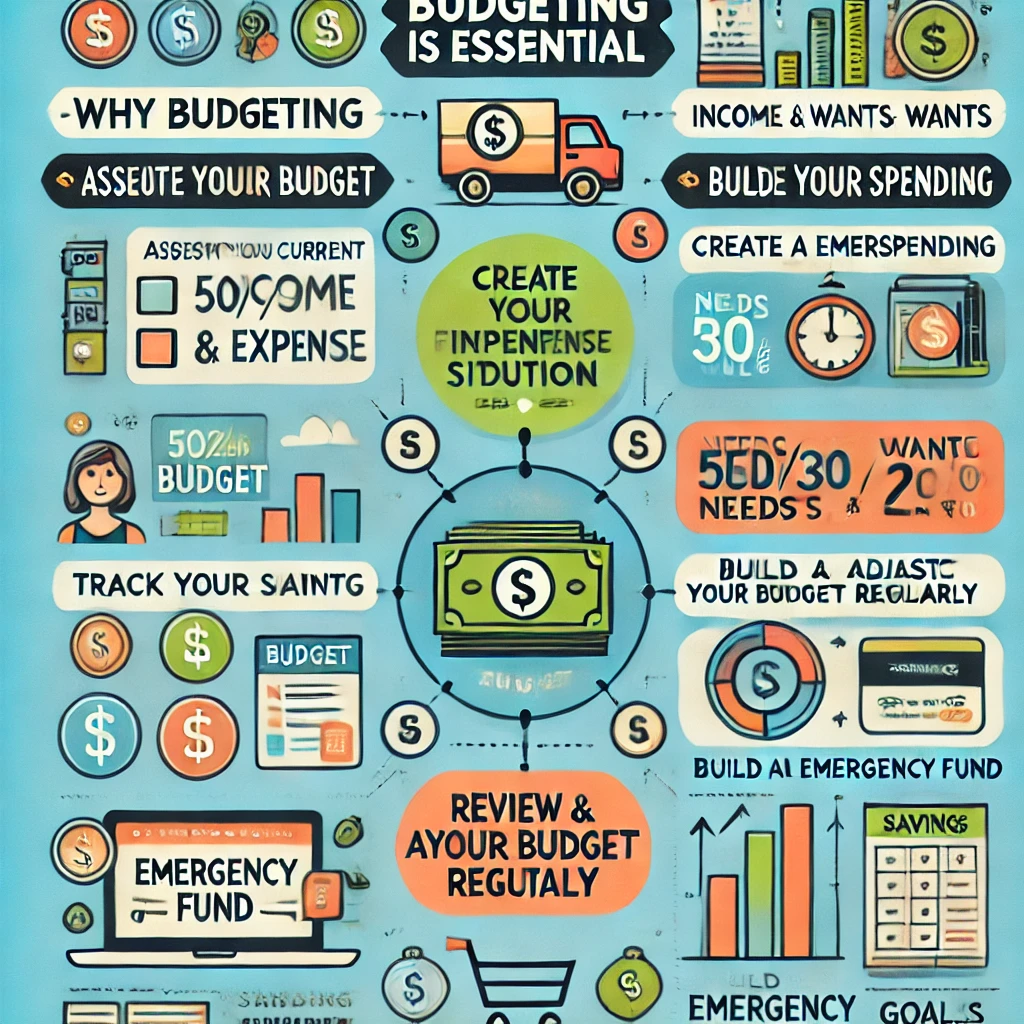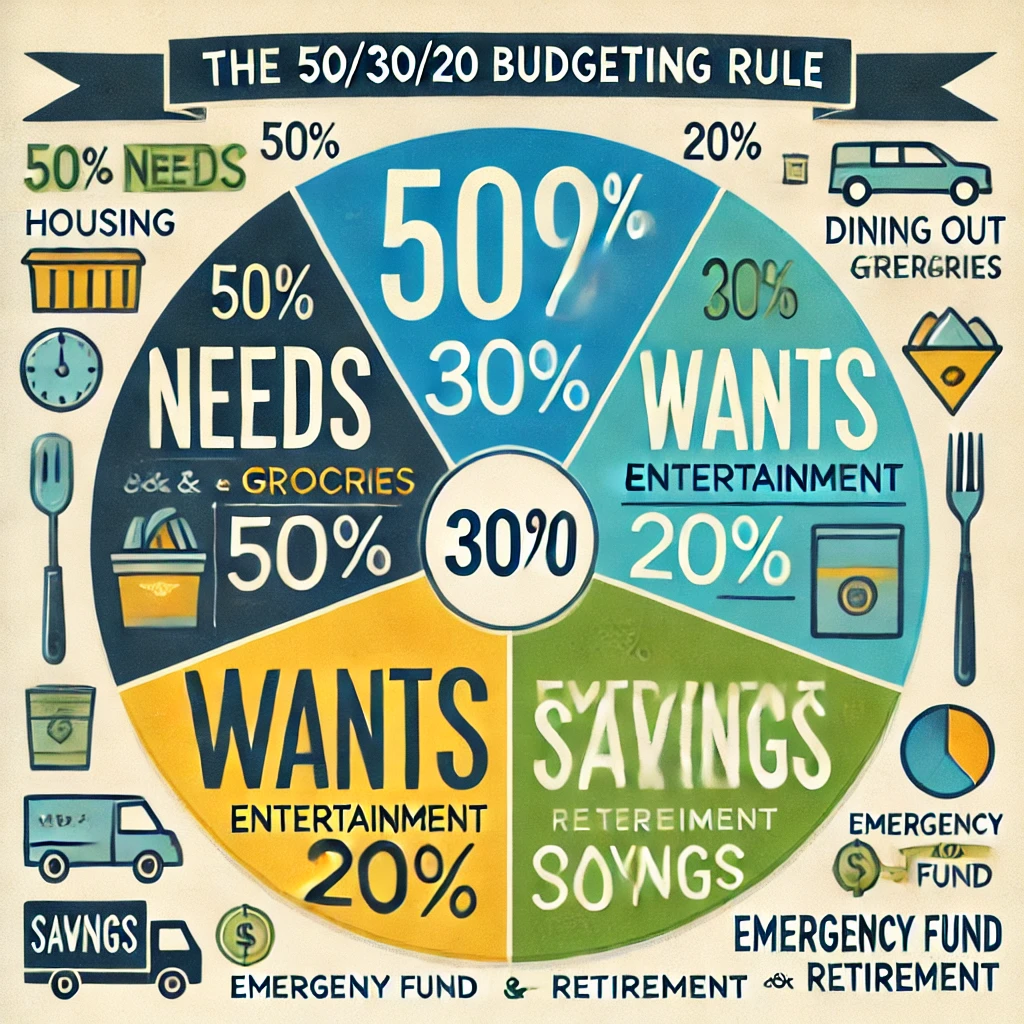Budgeting and saving money can seem overwhelming, especially for those just beginning their financial journey. However, establishing a solid financial foundation is crucial for achieving your financial goals, whether it’s buying a home, traveling, or securing your future. In this article, we’ll explore the top five tips to start budgeting and saving, providing you with practical steps to take control of your finances.

Why Budgeting is Essential
Before diving into the tips, it’s important to understand why budgeting is essential. A budget acts as a roadmap for your financial life, helping you track your income, expenses, and savings. It enables you to:
- Identify Spending Habits: Understand where your money goes each month.
- Set Financial Goals: Establish short-term and long-term goals.
- Avoid Debt: Prevent overspending and accumulating unnecessary debt.
- Build Savings: Create a safety net for emergencies and future expenses.
Now, let’s delve into the top five tips to help you get started on your budgeting and saving journey.
1. Assess Your Current Financial Situation
The first step in budgeting is to assess your current financial situation. This involves taking a close look at your income, expenses, debts, and savings. Here’s how to do it:
- Gather Financial Statements: Collect your bank statements, credit card bills, and any other financial documents.
- List Your Income: Include all sources of income, such as salary, side gigs, or passive income.
- Track Your Expenses: Write down your fixed expenses (like rent, utilities, and loan payments) and variable expenses (like groceries, dining out, and entertainment).
By understanding where you stand financially, you can make informed decisions about your budgeting strategy.
2. Create a Realistic Budget
Once you’ve assessed your financial situation, it’s time to create a realistic budget. Your budget should reflect your income and expenses while allowing for savings. Here are some steps to create an effective budget:
Set Budget Categories
Divide your expenses into categories, such as:
- Housing: Rent or mortgage payments, utilities.
- Transportation: Gas, public transport, car payments.
- Food: Groceries, dining out.
- Entertainment: Hobbies, subscriptions, outings.
- Savings: Emergency fund, retirement, investments.
Use the 50/30/20 Rule
A popular budgeting method is the 50/30/20 rule, which allocates your after-tax income as follows:
- 50% for needs (housing, groceries, transportation).
- 30% for wants (entertainment, dining out, vacations).
- 20% for savings and debt repayment.
This method provides a balanced approach, ensuring you cover your essentials while also saving for the future.

3. Track Your Spending
Tracking your spending is vital to maintaining your budget. It helps you stay accountable and identify areas where you can cut back. Here are some effective ways to track your spending:
Use Budgeting Apps
Consider using budgeting apps like Mint, YNAB (You Need a Budget), or Every Dollar. These apps can help you monitor your expenses in real time, set goals, and receive alerts when you’re nearing your budget limits.
Keep a Spending Journal
If you prefer a more hands-on approach, keep a spending journal. Write down every purchase, no matter how small, to get a clear picture of your spending habits. This can also help you identify patterns and make adjustments where necessary.
4. Build an Emergency Fund
An emergency fund is crucial for financial stability. It provides a safety net in case of unexpected expenses, such as medical bills, car repairs, or job loss. Here’s how to start building your emergency fund:
Set a Savings Goal
Aim to save three to six months’ worth of living expenses in your emergency fund. This may seem daunting, but you can start small. Set a target amount and gradually work your way up.
Automate Your Savings
One effective way to build your emergency fund is to automate your savings. Set up automatic transfers from your checking account to your savings account each month. This “pay yourself first” approach ensures that you save consistently without having to think about it.
5. Review and Adjust Your Budget Regularly
Budgeting isn’t a one-time task; it requires regular review and adjustment. Your financial situation and goals may change over time, and your budget should reflect that. Here’s how to keep your budget on track:
Schedule Monthly Reviews
Set aside time each month to review your budget. Compare your actual spending to your budgeted amounts and assess whether you met your savings goals. This will help you identify areas for improvement.
Be Flexible
Life is unpredictable, and it’s essential to be flexible with your budget. If you notice that you consistently overspend in a particular category, adjust your budget to reflect your actual spending. Additionally, celebrate your financial milestones and adjust your savings goals accordingly.
FAQs About Budgeting and Saving
1. How can I start budgeting if I have irregular income?
If you have an irregular income, it’s crucial to base your budget on your lowest expected income. Track your earnings over a few months to find an average. This will help you create a budget that is sustainable even in lean months.
2. What should I do if I can’t stick to my budget?
If you’re struggling to stick to your budget, revisit it to ensure it’s realistic. Identify areas where you can reduce spending and consider using cash envelopes for discretionary spending to help limit overspending.
3. How much should I save each month?
A common recommendation is to save at least 20% of your income. However, if this isn’t feasible, start with a smaller percentage and gradually increase it as you become more comfortable with budgeting and saving.
4. What if I have debt and want to start saving?
It’s essential to balance debt repayment with saving. Consider using the debt snowball method to tackle small debts first while still saving a small amount each month for emergencies. Once you’ve paid off some debt, you can redirect those funds into savings.
5. How can I make budgeting easier?
Making budgeting easier can involve using budgeting apps, setting up automatic bill payments, and simplifying your budget categories. Find what works best for you and adapt your approach as needed.
Conclusion
Starting to budget and save doesn’t have to be overwhelming. By assessing your current financial situation, creating a realistic budget, tracking your spending, building an emergency fund, and regularly reviewing your budget, you can take control of your finances. Remember, the key to successful budgeting is consistency and adaptability. With these tips in hand, you’re well on your way to achieving your financial goals and securing a brighter financial future. Start today, and watch your savings grow!
